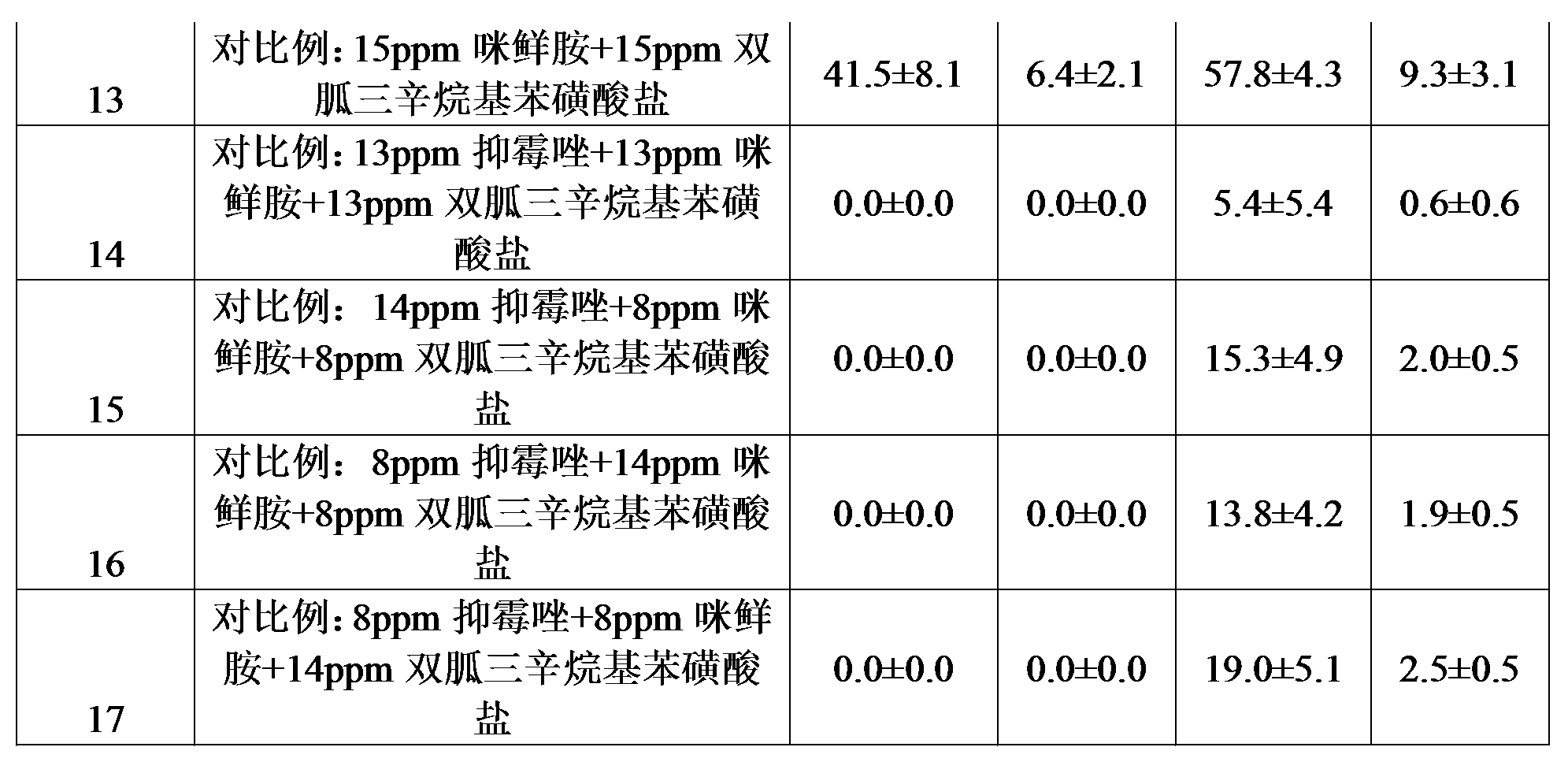Low-dosage chemical bactericide used for controlling postharvest diseases of fruits
A post-harvest disease and fungicide technology is applied in the field of fresh-keeping for preventing and controlling post-harvest diseases of citrus fruits, and can solve the problems of resistance of pathogenic microorganisms, high cost, reduced fungicide effectiveness, etc., and achieves low cost, simple operation, and post-harvest control. effect of disease
- Summary
- Abstract
- Description
- Claims
- Application Information
AI Technical Summary
Problems solved by technology
Method used
Image
Examples
Embodiment Construction
[0019] Experiment 1: Effects of a combination of chemical fungicides on the control of penicillium in ponkan fruit
[0020] 1. Experimental materials:
[0021] The fruit is citrus, and the variety is ponkan. Pathogen: Penicillium digitatum.
[0022] The fungicides used were:
[0023] Weixian, Imazalil (Imazalil) fungicide, the dosage form is 50% emulsifiable concentrate, purchased from Janssen Pharmaceutical Company, Belgium, the recommended concentration for normal use is 7.5-10 kg per 5 ml of water.
[0024] Prochloraz, a prochloraz fungicide, is in the form of a suspension, purchased from Maxim Chemical Company of Israel, and the recommended concentration for normal use is 250-500 mg / kg.
[0025] Bacoud, biguanide trioctylbenzene sulfonate (Iminoctadine tris) fungicide, the dosage form is 40% wettable powder, purchased from Dainippon Ink Chemical Industry Co., Ltd., the recommended concentration for normal use is 200-400mg / kg.
[0026] 2. Processing:
[0027] (1) Fruit...
PUM
 Login to View More
Login to View More Abstract
Description
Claims
Application Information
 Login to View More
Login to View More - R&D
- Intellectual Property
- Life Sciences
- Materials
- Tech Scout
- Unparalleled Data Quality
- Higher Quality Content
- 60% Fewer Hallucinations
Browse by: Latest US Patents, China's latest patents, Technical Efficacy Thesaurus, Application Domain, Technology Topic, Popular Technical Reports.
© 2025 PatSnap. All rights reserved.Legal|Privacy policy|Modern Slavery Act Transparency Statement|Sitemap|About US| Contact US: help@patsnap.com


